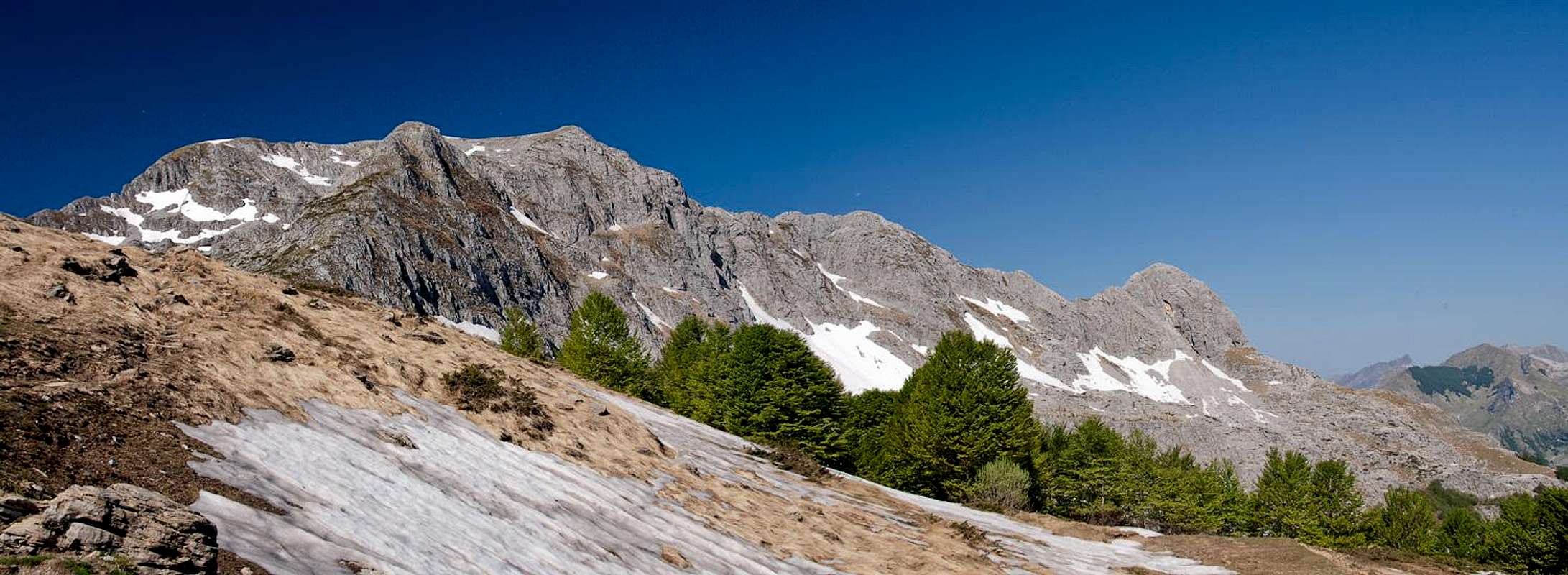-
 6639 Hits
6639 Hits
-
 71.06% Score
71.06% Score
-
 1 Votes
1 Votes
|
|
Route |
|---|---|
|
|
44.03744°N / 10.32346°E |
|
|
Hiking, Scrambling |
|
|
Spring, Summer, Fall |
|
|
Half a day |
|
|
Hike and Scramble |
|
|
Overview
Of the many routes which lead to the summit of Pania della Croce, the one starting at Piglionico is by far the shortest. It starts at roughly 1100m so that only 800 - 900m have to be climbed. Depending on the conditions it is either an easy scree scramble or - when snow patches cover the main ascent couloir - can turn into a hazardous balancing act on unstable ground. We were "lucky" to climb the route in the latter conditions which added some excitement to the climb.
The first part of the route runs through a dense beech forest along a steep, rutted path which turns shallow as you head above the timberline. From there A slope traverse takes you past Rifugio Rossi to the saddle of Foce Puntone, where the real ascent starts. The route follows the scree filled eastern couloir and heads out slightly to the north of the summit. A final traverse along the north ridge takes you to the top.
The overall climbing time is something between 2:30h and 3h.
Getting There
See the main page Getting There section. The last itinerary is the one to Piglionico.
Route Description
- Start altitude: 1100m
- Summit altitude: 1858m
- Prevailing exposure: North, then East, at last East and West along the ridge
- Type: Steep Scree Scramble
- Protection: None
From the Chapel at Piglionico follow the road until it ends. Here a path takes you across a rocky rib into the beech forest underneath Pania Secca. Since you are underneath the north face the forest is rather dark and contains snowfields until late in the year. The path first traverses several hundred metres to the east before steeply climbing up a wide valley. Every now and then it touches upon a limestone rib (views) but quickly returns into the deep forest. After about an hour you head above the timberline and step on the sloped karst plateau between the two Panie.
A few hundred metres onto the plateau the normal route to Pania Secca turns off to the left, heading through a kind of heath. The Pania della Croce route turns right and heads for the nose of the dead man, Uomo Morto. Beneath this nose you'll reach Rifugio Rossi alle Panie. Pass the rifugio and head on underneath Uomo Morto's features. A traverse takes you to Foce Puntone, the saddle between Uomo Morto and Pania della Croce. From the saddle you have a good view of the things to come.
Right at Foce Puntone the eastern couloir starts, which ends right underneath the summit. At first the path runs along the eastern side of the couloir before heading down into its centre. A few zigzags take you to its eastern end from where the route turns north-west, heading for the norhern summit ridge of the mountain. At a trail intersection (one path comes up from Foce di Mosceta the west, another one heads over to Pizzo delle Saette) turn left and follow the remainder (200m) of the ridge towards the summit. There are two paths, one on the very ridge (medium exposure) and one to its east (no exposure).











